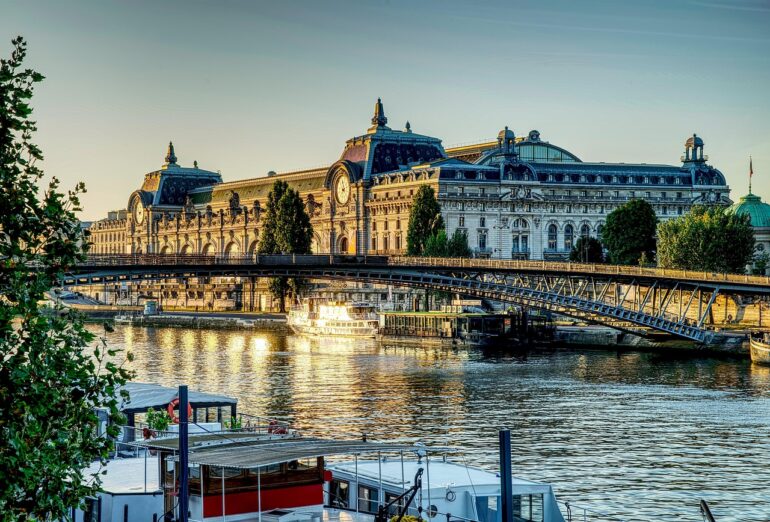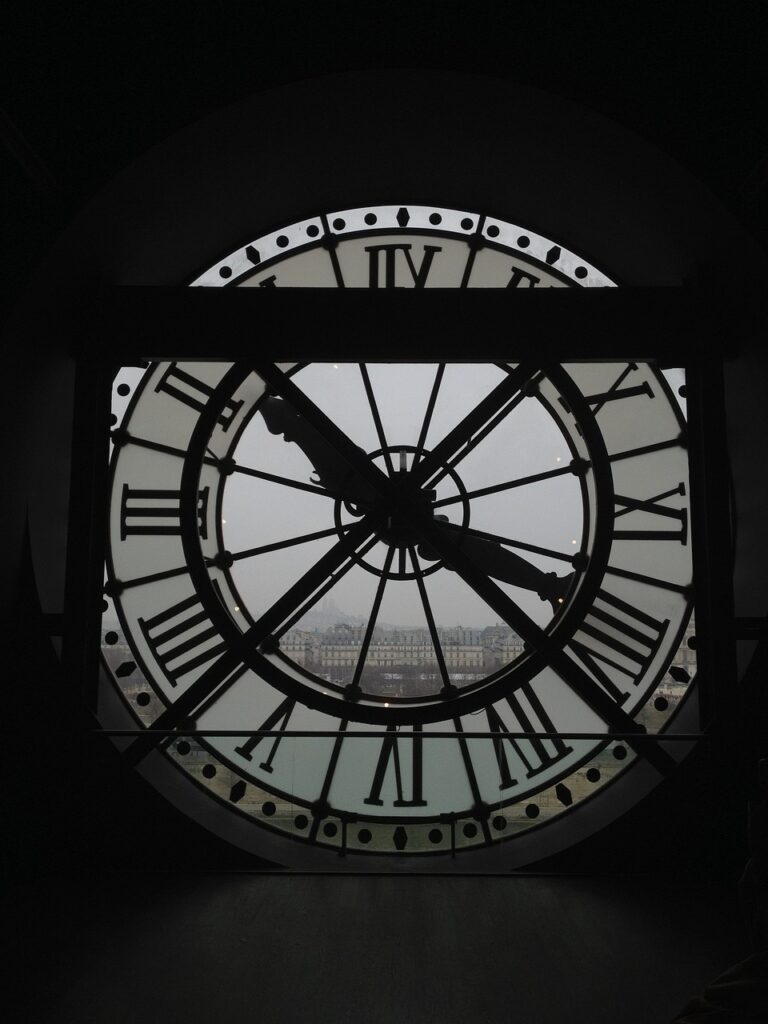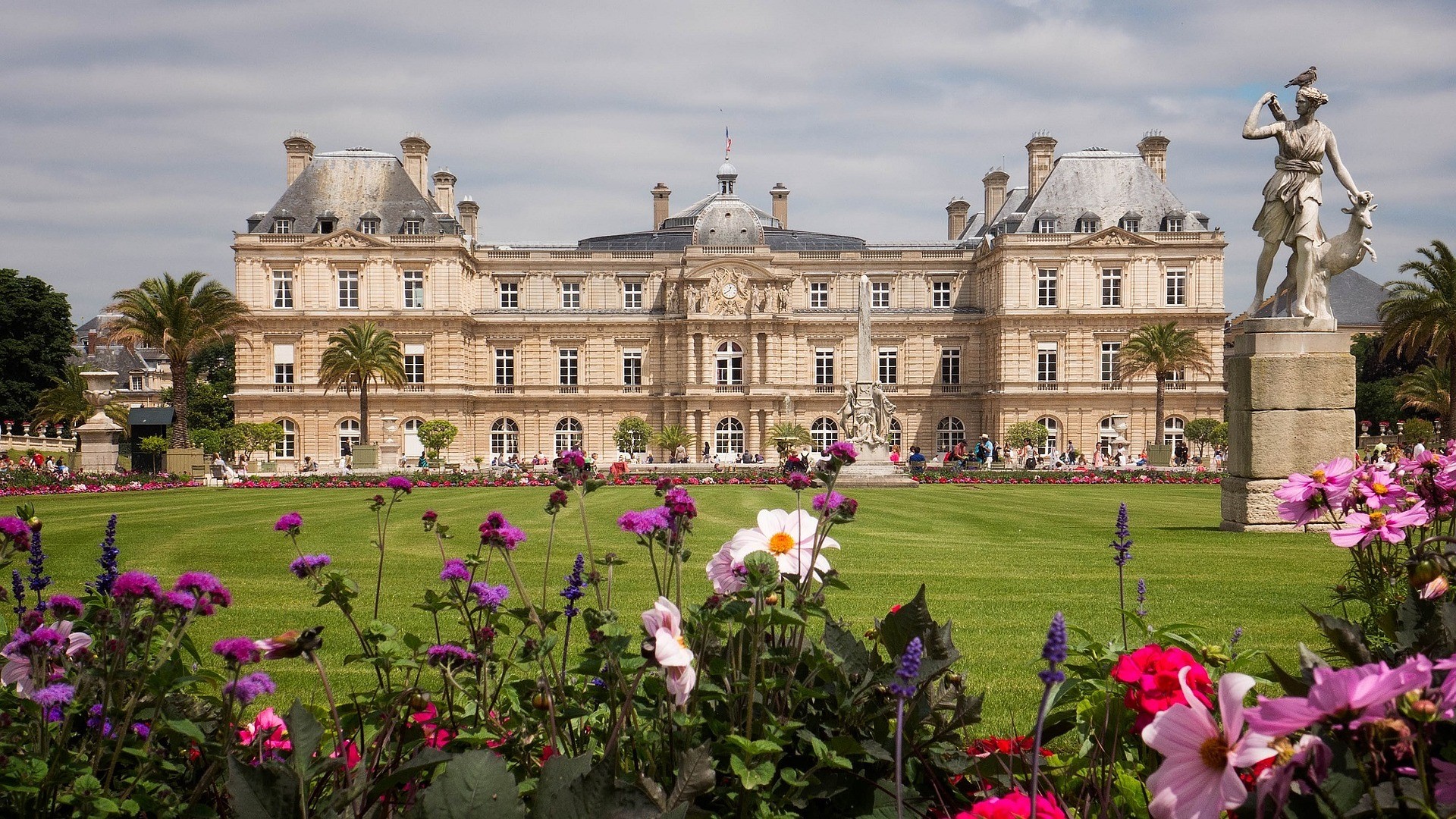What is the Gare d’Orsay?
The Gare d’Orsay, located in the heart of Paris, is far more than just a train station; it is a living witness to the architectural and cultural evolution of the French capital. Originally built to welcome visitors to the 1900 Exposition Universelle, it played a crucial role in the development of the city’s transport networks. Today, it is world-renowned as the Musée d’Orsay, home to one of the most prestigious collections of Impressionist and Post-Impressionist art in the world.
When speaking of the Gare d’Orsay, it is essential to understand its importance as a bridge between past and present. Before becoming a museum, it served as the terminus for the Paris–Orléans railway company. Its transformation into a cultural space is a testament to Paris’s ability to reinvent its historic monuments while preserving their distinctive character.
Visiting the Gare d’Orsay today immerses you in an atmosphere where art, history, and architecture harmoniously converge. It is a place where time seems to stand still, allowing visitors to appreciate the richness of French heritage in an exceptional setting.
History of the Gare d’Orsay
The story of the Gare d’Orsay began at the end of the 19th century, when Paris was preparing to host the 1900 Exposition Universelle. The station was designed to be the world’s first all-electric terminus—a technological marvel for its time. Its inauguration marked the beginning of a new era for urban rail transport.
However, over the decades, the station’s use declined as transportation needs evolved. By the 1930s, trains had become too long for its platforms, leading to its closure as a terminus in 1939. This period of decline left the station abandoned for several decades, until a new vision for its future began to emerge.
In the 1970s, the idea of transforming the Gare d’Orsay into a museum took shape. In 1977, President Valéry Giscard d’Estaing announced the project of creating a museum dedicated to 19th-century art. This decision marked the start of an ambitious renovation that breathed new life into the monument while giving it a new cultural vocation.
Architecture and Design of the Gare d’Orsay
The architecture of the Gare d’Orsay perfectly illustrates the elegance and innovation of the Belle Époque. Designed by architect Victor Laloux, the building masterfully blends Beaux-Arts and Art Nouveau styles, with an imposing façade and vast glass roofs that flood the interior with natural light.
Inside, the station is equally impressive, with vast open spaces and refined architectural details. Exposed metal structures, painted murals, and monumental clocks capture the attention of visitors. Every corner of the building tells a story, offering unique insight into the ingenuity and creativity of the era.
What makes the Gare d’Orsay particularly fascinating is its ability to reinvent itself while preserving its original character. Transforming it into a museum required meticulous architectural adaptation, integrating modern exhibition spaces without compromising the site’s historic integrity. The result is a perfect balance between the old station and the contemporary museum, still captivating visitors from around the world.
From Station to Museum
The transformation of the Gare d’Orsay into a museum is a story of vision and determination. It required close collaboration between architects, engineers, and curators, each bringing their expertise to create a space that honors both past and present. The goal was to make the Musée d’Orsay a place where 19th-century art could be admired in a setting worthy of its grandeur.
The conversion took place from 1978 to 1986, under the direction of architects Renaud Bardon, Pierre Colboc, and Jean-Paul Philippon. The vast spaces of the former station were redesigned to accommodate galleries, temporary exhibition halls, a library, and an auditorium. A central glass roof was created to maximize natural light, enhancing the works on display.
The Musée d’Orsay officially opened in 1986, an event celebrated by art lovers worldwide. Since then, it has become a major cultural institution, attracting millions of visitors each year. It is recognized not only for its outstanding Impressionist and Post-Impressionist collection but also for hosting world-class temporary exhibitions.
Masterpieces of the Musée d’Orsay
The Musée d’Orsay is famed for housing some of the most iconic artworks in art history. Among them are masterpieces by Claude Monet, Vincent van Gogh, and Édouard Manet. Each gallery is a journey through the artistic movements that shaped the 19th century, offering visitors a unique perspective on a period rich in innovation and creativity.
Monet’s Impressionist paintings, such as The Saint-Lazare Station or Poppies, capture light and color in unprecedented ways, transforming ordinary scenes into poetic visions. Similarly, Van Gogh’s works, like Starry Night Over the Rhône or The Church at Auvers, reveal the artist’s emotional intensity and bold technique, which continues to fascinate audiences worldwide.
In addition to paintings, the museum also holds an impressive collection of sculptures, photographs, and decorative arts. From Auguste Rodin’s sculptures to Art Nouveau furniture, each piece demonstrates the ingenuity and diversity of 19th-century artistic production. These emblematic works make the Musée d’Orsay a must-see for anyone seeking to understand and appreciate the evolution of modern art.
Visiting the Gare d’Orsay: Practical Information
For those wishing to discover the richness of the Musée d’Orsay, planning your visit is essential. The museum is open daily except Monday, with extended hours that allow visitors to enjoy their experience to the fullest. It is recommended to book tickets in advance, especially during peak season, to avoid long queues.
In terms of accessibility, the museum is well connected by public transport, with several metro and bus lines nearby. Vélib’ bike stations are also close at hand for those preferring to cycle. The museum offers facilities for visitors with reduced mobility, ensuring a pleasant visit for all.
Don’t miss the temporary exhibitions in addition to the permanent collections. These shows provide fresh perspectives on specific artists or movements, further enriching the experience. And don’t forget to stop by the museum shop, offering a wide range of books, posters, and souvenirs inspired by the masterpieces on display.
Events and Temporary Exhibitions
The Musée d’Orsay is not only a place of preservation but also a dynamic cultural hub. Its regularly changing temporary exhibitions shed light on lesser-known aspects of 19th-century art and its artists. These shows often result from international collaborations, attracting a broad audience and enhancing the museum’s global influence.
In addition to exhibitions, the museum organizes lectures, workshops, and guided tours that deepen visitors’ understanding of art history. These events create opportunities for lively discussions led by experts, making the museum engaging for both seasoned art lovers and curious newcomers.
The museum also hosts special events such as concerts and film screenings, offering alternative ways of experiencing art. Often linked to temporary exhibitions, these events create a synergy between different forms of artistic expression. To stay updated, visitors are encouraged to check the museum’s official website or subscribe to its newsletter.
Activities Near the Gare d’Orsay
After exploring the Musée d’Orsay, it’s a pleasure to stroll around the neighborhood to discover more Parisian treasures. Ideally located on the Left Bank of the Seine, the museum is close to many other attractions. Among them, the Tuileries Garden is perfect for a relaxing walk or picnic, with stunning views of the Louvre and Place de la Concorde.
Just a short walk away is the Saint-Germain-des-Prés district, known for its historic cafés such as Café de Flore and Les Deux Magots, which welcomed many intellectuals and artists over the years. The area is also famous for its elegant boutiques and art galleries, offering endless opportunities for shopping and cultural discovery.
For those wishing to continue their artistic journey, the Musée de l’Orangerie, located at the western end of the Tuileries, houses Monet’s famous Water Lilies. Smaller but equally captivating, it perfectly complements a visit to the Musée d’Orsay. Together, these sites form an exceptional cultural itinerary for art and history lovers.
Why the Gare d’Orsay is a Must-See in Paris
The Gare d’Orsay is far more than a museum; it is a symbol of Parisian innovation and cultural rebirth. Its transformation from an abandoned railway station into a world-renowned museum is an inspiring example of heritage preservation and reinvention. For art lovers, the Musée d’Orsay offers an unparalleled collection tracing the development of modern art, from early Impressionism to Post-Impressionism.
Visiting the Gare d’Orsay means entering a world where art and architecture meet spectacularly. The building itself is a masterpiece, with architectural details and an innovative design that embody the brilliance of the Belle Époque. Every visit is an opportunity to discover new perspectives on familiar works and marvel at the richness and diversity of human creativity.
The Gare d’Orsay is also a meeting place, where visitors from across the globe come together to share their passion for art and history. Whether you are a museum regular or an occasional visitor, a trip to the Gare d’Orsay is an enriching experience that leaves unforgettable memories and a deeper understanding of art’s impact on culture.






